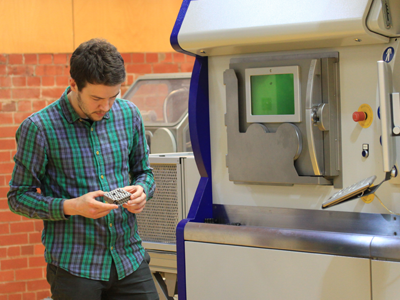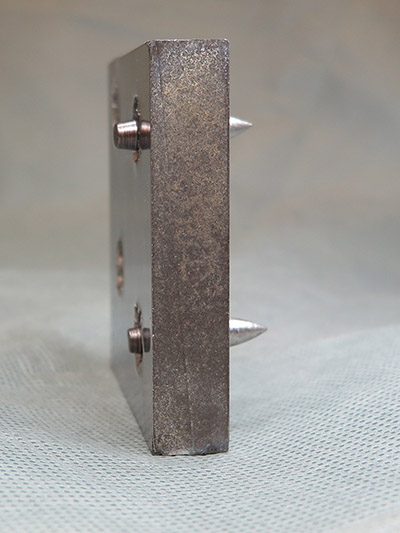Additive manufacturing to impact future ballistic protection

Researchers from the Department of Defence and RMIT University have demonstrated that additive manufacturing of light-weight titanium could become a viable option for military vehicle armour.
Until now steel has been the go-to choice for armour because of its strength and hardness. However, steel armour adds substantial weight which can impact vehicle performance speed, range, payload and endurance.
A new additive manufacturing approach pioneered by researchers from RMIT’s Centre for Additive Manufacturing, Dr Alex Medvedev and Prof. Milan Brandt has enabled the fabrication of ballistic grade titanium material. Researchers have previously investigated lightweight titanium alloys for military purposes however, the high cost of raw materials and the difficulty in machining has meant there has been limited uptake for some applications.
Recent advances in additive manufacturing processes and post-manufacture heat treatment could now make titanium a far more viable option.
Defence materials scientist Dr Darren Edwards says that while additive manufacturing offers great potential thanks to its ability to rapidly produce near end-state components with highly customised geometries and microstructures on demand, standard additive manufacturing processes using default parameters can result in poorer mechanical properties such as strength and ductility compared to traditional manufacture.
“Our research was focused on optimising the fabrication process, to achieve the desired ballistic properties of the material,” he explains.

The team had to overcome a number of technical challenges to achieve the required performance.
“We did a lot of work to determine the influence of microstructure features – the phase composition, the grain structure and crystallographic texture – on the likelihood of failure under high strain-rate ballistic impact.”
“We now know the specific microstructures that provide the best ballistic performance.”
“RMIT researchers were able to adjust the additive manufacturing processing parameters to significantly increase the ballistic protection of material straight out of the machine,” Dr Edwards explains.
In addition, the team came up with a new post-manufacture heat treatment that resulted in a considerable increase in ballistic performance, also exceeding both the required benchmark and the performance of commercial off the shelf titanium armour plate.
“Our hope is that this research will pave the way for the sovereign manufacture of titanium armour.”
Sponsored through the Next Generation Technologies Fund, the RMIT research project will continue to investigate further protection improvements that can be obtained via the adoption of innovative additive manufacturing technologies.

